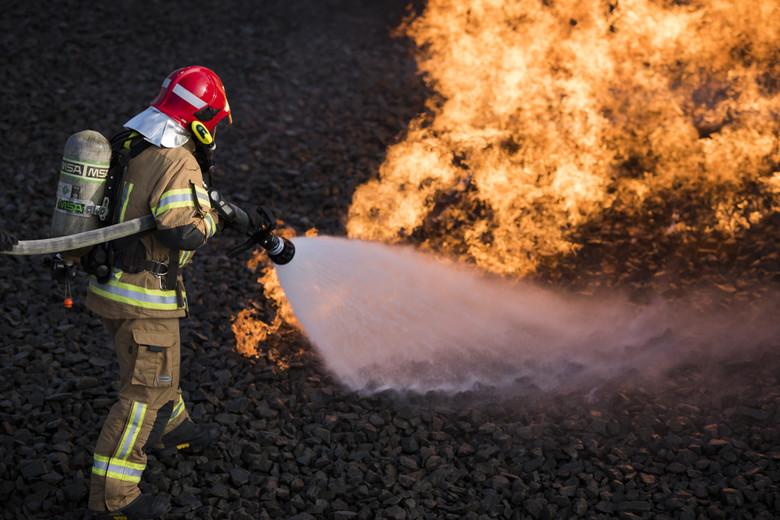
The emerging era of great-power competition shapes as a hot peace.
‘Hot peace’ is a better label for what the world faces than ‘new cold war’, not least because we’re well short of an icy bipolar faceoff between China and the US.
Beyond the current superpower and the coming superpower, a lot of other big powers are going to matter in this new era. All those powers will be running in many different races. See the G20 as competitors in a big-power decathlon, with lots of other nations also contending in the foreign policy version of track and field.
The model is multipolar. Diverse powers and diverse competitions. In the hot peace, the US and China will be central but not always decisive. That’s because managing differences and divisions will be the main job of the G2, not agreeing on decisions.
If and when they can get together to agree on G2 deals, Beijing and Washington will have the capacity to direct and dominate on specific issues. Good deals are still possible in a hot peace. But this new era is going to make deals difficult, because competition and confrontation build as the elements of engagement fade. It’ll be a hotly contested peace.
In How to avoid an avoidable war, Kevin Rudd offers a thoughtful discussion of the strategic competition between China and the US:
When future generations look back on 2018, it could well be as the year in which the relationship between the two great powers of the twenty-first century—the United States and China—shifted from peaceful coexistence to a new form of confrontation, although its final trajectory remains far from certain.
Part of thinking about that trajectory is naming what we see. To argue that this isn’t a new cold war throws up the obvious task: offer a better label.
One flippant suggestion from inside the Canberra system was ‘big-cat spat’. It’s certainly an update of the proverb that one mountain can’t contain two tigers. The need, though, is to broaden the scope to suggest many mountains and many tigers.
In the quest for a label, I played with ‘races’. The ‘new geo race’? Nah! A slightly better version is a ‘big-power Olympics.’ Plenty of medals to go around in lots of different disciplines. Dropping the Olympics as misleading or too off topic, I refined this to ‘big-power decathlon’.
Decathlon works because it’s easy to draw up a crowded list of contests/races that’ll figure in the hot peace: military–strategic, geopolitics, geoeconomics, trade, cyber realms, communications, multilateral institutions, climate change, resources and space.
Then open the ‘values’ box to add in democracy, human rights and liberalism in a time of nationalism and authoritarian resurgence. The challenge, really, is to cram it all into just 10 headings. To win the name game, the label has to be able to trump new cold war. Up against war, ‘big-power decathlon’ is too sporty, although it captures the range of players and races.
Hot peace answers new cold war, using its own frame of reference. The argument is that we have arrived at a troubled form of peace, not a muted form of indirect war. This is a strategic contest with many peaceful dimensions. Hot peace rebuts the cold war claim by saying, ‘We’re not there yet!’
Without getting too metaphysical, the hot idea works better in describing close partners who are simultaneously opponents. Rather than frigid nuclear and ideological standoff, China and the US are locked together—interdependent even if intemperate. Joseph Nye gets it right in describing the relationship of the two giants as ‘cooperative rivalry’.
In a new book, a former US ambassador to Moscow, Michael McFaul, uses the title From cold war to hot peace—an American ambassador in Putin’s Russia. What McFaul sees with Russia has now arrived with China.
During the Soviet–US cold war, hot peace was the improved state many yearned to reach. Back in 1973, Pierre Hassner mused in the New York Times—under the headline ‘Cold war to hot peace’—about that shift:
A new stage of ‘hot peace’ has indeed replaced the cold war, but it would be wrong to assume that the farther one gets from war and propaganda the closer one is to peace and reconciliation. In this new state of ambiguity, situations may thaw without being solved, isolation may be broken but in favor of asymmetrical penetration or imbalance rather than of reconciliation.
We are going from Rudd’s ‘peaceful coexistence’ to a more ambiguous hot peace.
To embrace that hot peace description of where we are and where we’re going is to take a lesson from the cold war—the importance of words and visions in defining and directing the conflict. That’s a thought from one of the great American historians of the cold war, John Lewis Gaddis.
He notes that the cold war was fought at different levels in dissimilar ways in multiple places over a very long time. Any attempt to reduce its history exclusively to the role of great forces, great powers or great leaders would fail to do it justice. Yet for Gaddis, the first step to understanding is clear:
‘It is worth starting with visions, though, because they establish hopes and fears. History then determines which prevail.’
If the many competitors stuff up this new era, they could freeze the hot peace and drive history to deliver us all to a cold war.